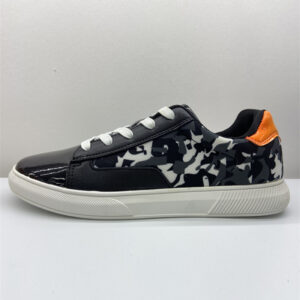Wearing slip-on shoes that don’t fit properly can lead to various foot problems and discomfort.
Here are some common foot problems that can occur when slip-on shoes are ill-fitting:
Blisters: If slip-on shoes are too tight or rub against the skin, blisters can form. Blisters are fluid-filled pockets that develop as a result of friction. They can be painful and make walking or wearing shoes uncomfortable.
Corns and Calluses: Corns and calluses are areas of thickened skin that typically develop in response to pressure or friction. Ill-fitting slip-on shoes can create excessive pressure points on the feet, leading to the formation of corns or calluses. These can be painful and may require treatment for relief.
Ingrown Toenails: Tight or narrow slip-on shoes can put pressure on the toes, increasing the risk of ingrown toenails. Ingrown toenails occur when the edge of the nail grows into the surrounding skin, causing pain, swelling, and possible infection.
Foot Pain and Discomfort: Shoes that are too tight, too loose, or lack proper support can result in general foot pain and discomfort. This can include arch pain, heel pain (such as plantar fasciitis), ball of the foot pain (metatarsalgia), or overall foot fatigue.
Bunions and Hammertoes: Tight or narrow slip-on shoes can exacerbate or contribute to the development of bunions and hammertoes. Bunions are bony protrusions that form at the base of the big toe, while hammertoes involve an abnormal bending or contracture of the toes. Both conditions can cause pain and discomfort.
Poor Alignment and Posture: Improperly fitting slip-on shoes can affect your gait and lead to poor alignment and posture. This can result in issues such as knee pain, hip pain, or back pain.
Reduced Stability and Balance: Slip-on shoes that are too loose or lack proper support can reduce stability and balance, increasing the risk of trips, slips, or falls.
It’s essential to wear slip-on shoes that provide a proper fit, adequate support, and sufficient room for your feet. This will help minimize the risk of foot problems and ensure overall foot comfort. If you experience persistent foot pain or discomfort, it’s advisable to consult a healthcare professional, such as a podiatrist, for a proper evaluation and guidance.
What are some tips for finding slip-on shoes that provide a proper fit and support?
Finding slip-on shoes that provide a proper fit and support is crucial for your foot health and overall comfort.
Here are some tips to help you in your search:
Measure Your Feet: Start by measuring your feet using a measuring tape or ruler. Measure the length and width of both feet. This will serve as a baseline for determining your shoe size.
Know Your Foot Type: Understand your foot type to guide your selection. Determine if you have low arches (flat feet), high arches, or neutral arches. This can influence the level of support and cushioning you need in slip-on shoes.
Try on Different Sizes: Don’t rely solely on your usual shoe size. Sizes can vary between brands and styles. Try on different sizes, slip on shoes manufacturer in China including half sizes if available, to find the best fit. Remember to try both shoes and walk around to assess comfort and fit.
Consider Width Options: If you have wider or narrower feet, look for slip-on shoes that offer width options. Some brands provide shoes in different widths to accommodate various foot shapes.
Check for Toe Room: Ensure that there is enough toe room in the slip-on shoes. Your toes should have some space to wiggle and move comfortably without feeling cramped or squeezed.
Heel Fit: Pay attention to how the heel of the slip-on shoe fits. It should offer a snug and secure fit without slipping or rubbing against the back of your foot.
Arch Support: Look for slip-on shoes that provide adequate arch support. This is especially important if you have low or high arches. Supportive insoles or built-in arch support can help prevent overpronation or supination and provide better foot alignment.
Cushioning and Padding: Consider slip-on shoes with sufficient cushioning and padding, especially in the insole. This helps absorb shock and provides added comfort during walking or prolonged standing.
Flexibility: Ensure that the slip-on shoes have some flexibility, particularly in the forefoot area. This allows for natural foot movement and a more comfortable stride.
Quality Materials: Choose slip-on shoes made from high-quality materials that offer durability and breathability. This ensures that the shoes can withstand regular use and provide a comfortable environment for your feet.
Brand Reputation: Consider reputable brands known for their quality and comfortable footwear. Research customer reviews and ratings to gauge the overall satisfaction and fit of the slip-on shoes.
Consult with a Professional: If you have specific foot conditions or concerns, it may be beneficial to consult with a podiatrist or footwear specialist. They can provide personalized recommendations based on your foot type and any specific requirements you may have.
Remember that everyone’s feet are unique, so finding the right slip-on shoes may require some trial and error. It’s important to prioritize comfort, fit, and support to ensure optimal foot health and overall satisfaction.

